The latest annual state accounts from the Australian Bureau of Statistics (ABS) showed that Victoria’s per capita GDP declined by 1.2% in 2023-04, and it has only increased by 10.4% since the Global Financial Crisis (GFC) in 2008.
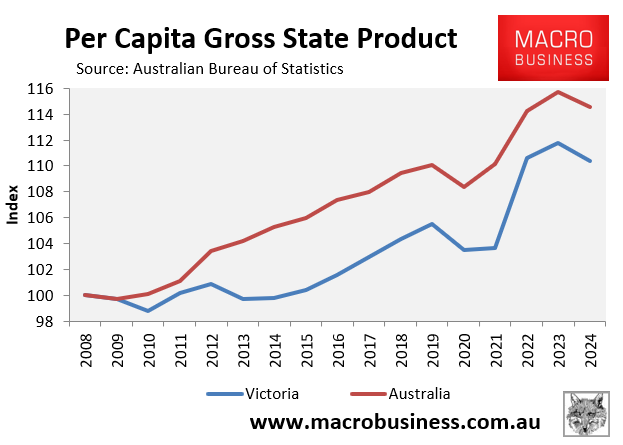
This compared with a 1.0% national decline in per capita GDP in 2023-24 and a 14.5% gain since 2008.
Victoria’s poor GDP growth occurred despite its households raiding their savings far more aggressively than households in other jurisdictions.
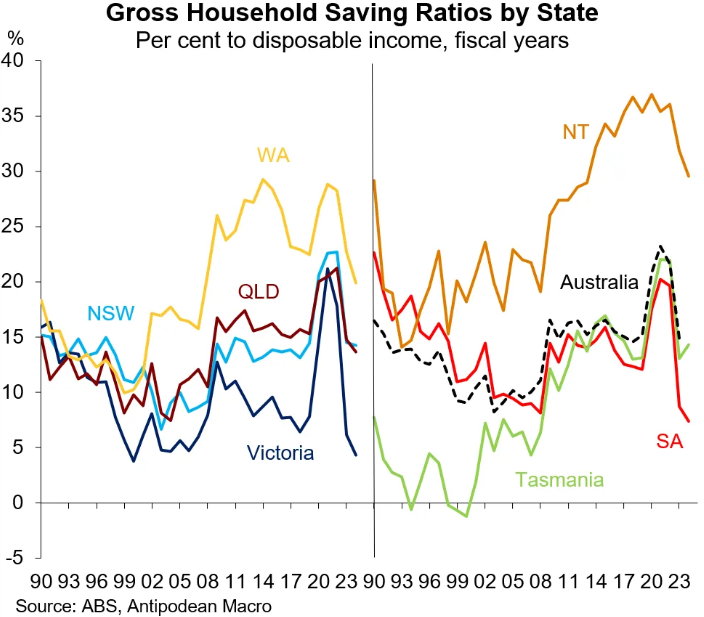
Victoria has also seen the nation’s slowest growth in gross state income per capita since the GFC.

In 2023-24, Victoria had the third-lowest real gross state income in the country, after only Tasmania and South Australia.
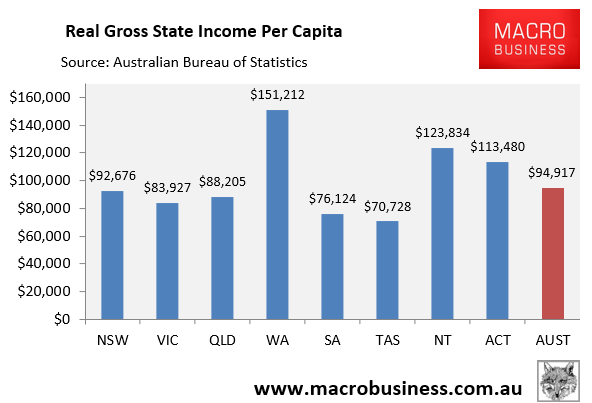
Productivity growth in Victoria is also poor, rising at less than one-third the rate in NSW.
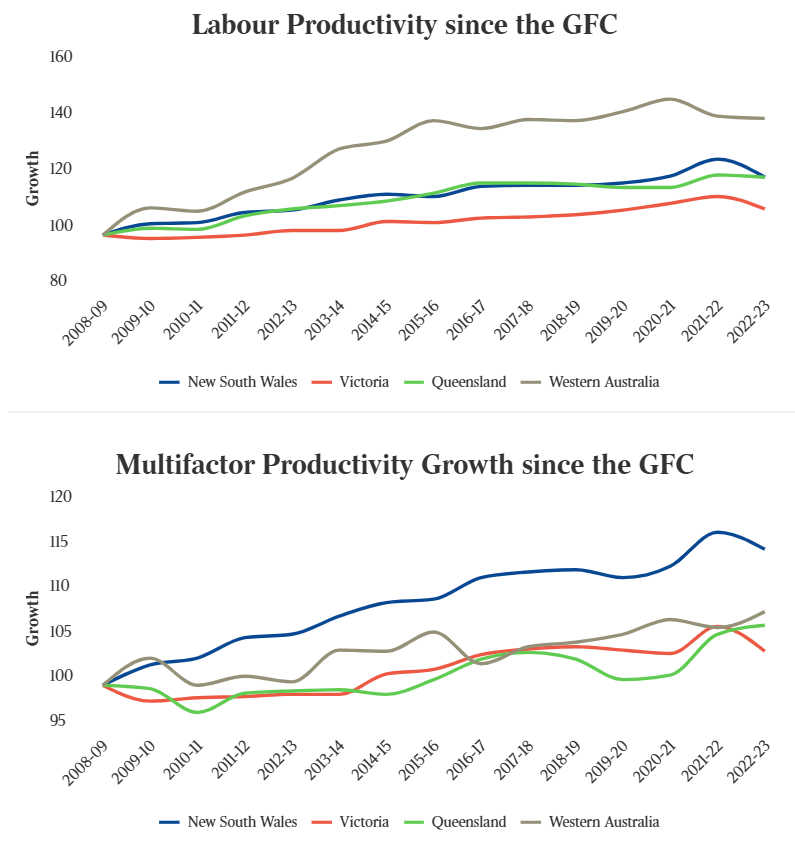
New state data compiled by CBA shows that Victoria’s economy continues to lag the nation.
Victoria’s unemployment rate is easily the highest in the nation.
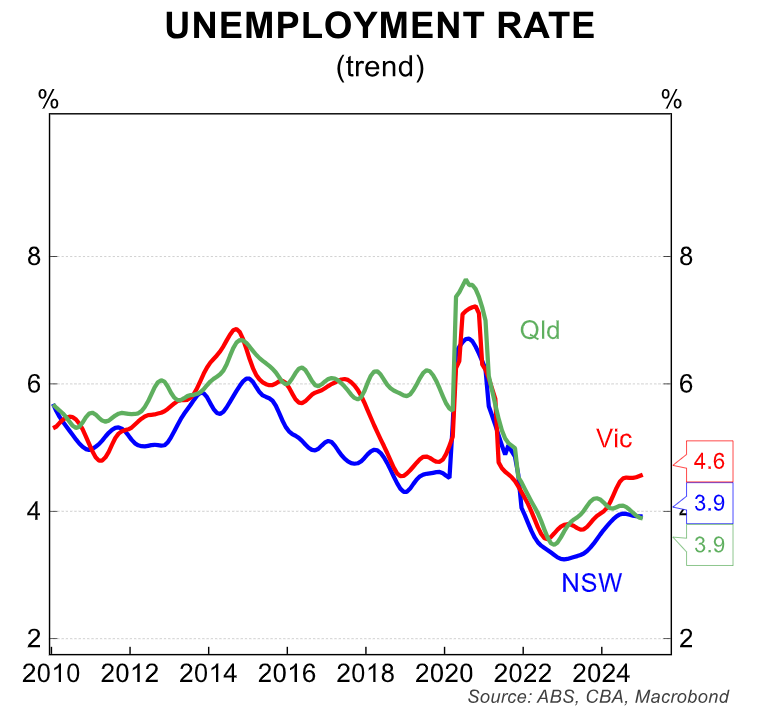
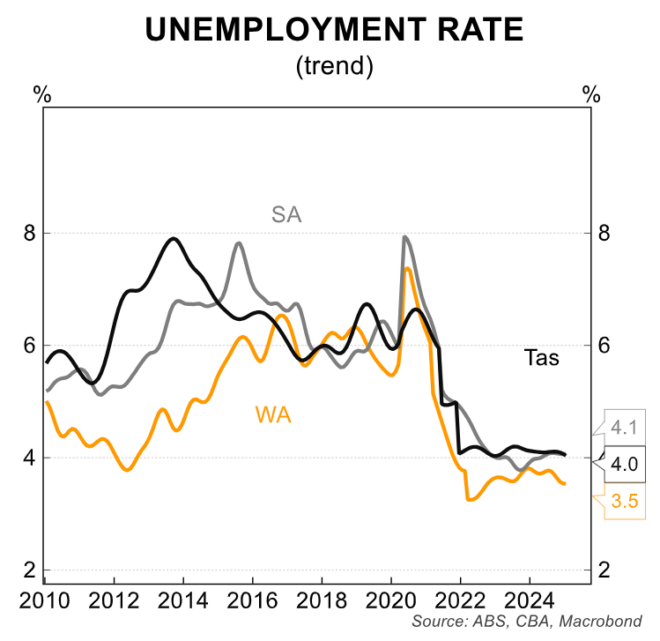
Victoria has also experienced the steepest rise in unemployment rates from their cyclical low.
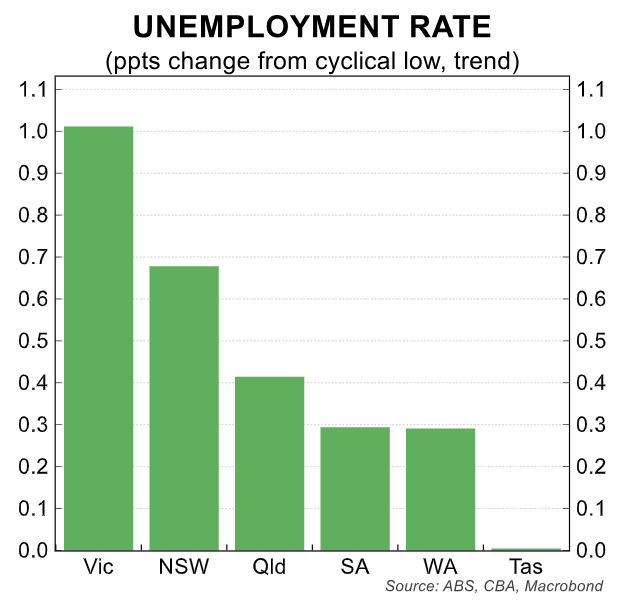
Victoria is also proving a tough state to operate a business.
Melbourne’s office vacancy rate is the highest of the major capital cities.
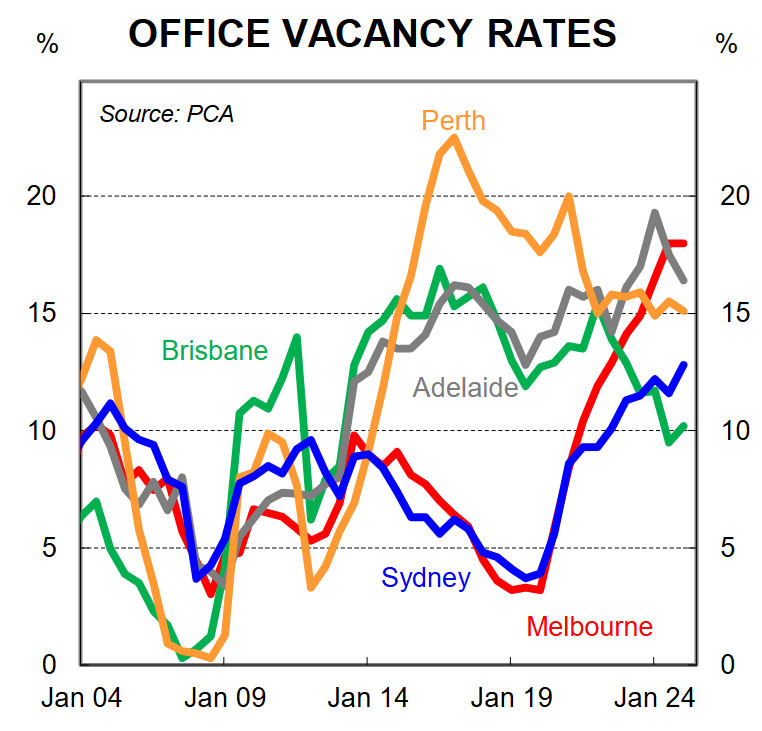
Business conditions and confidence have fallen the most in Victoria.
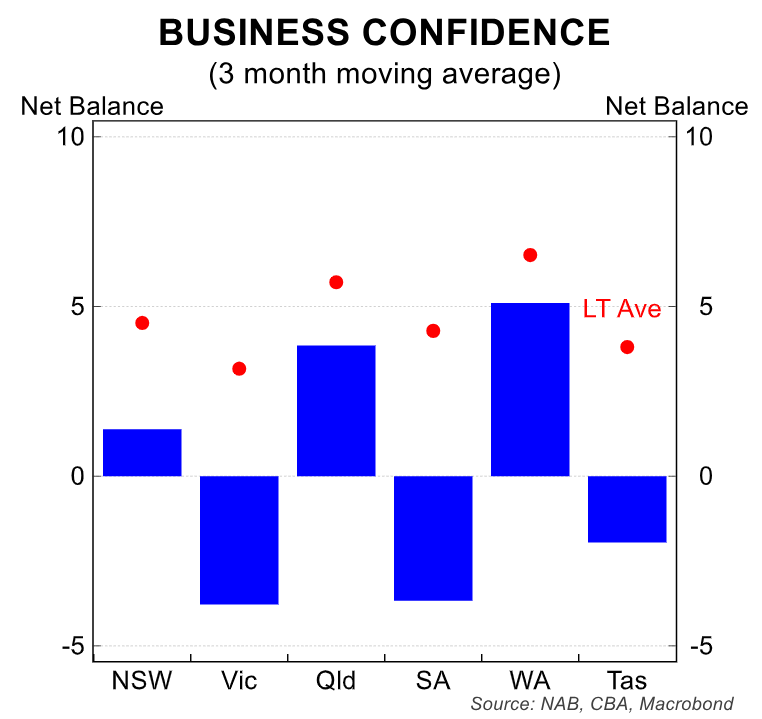
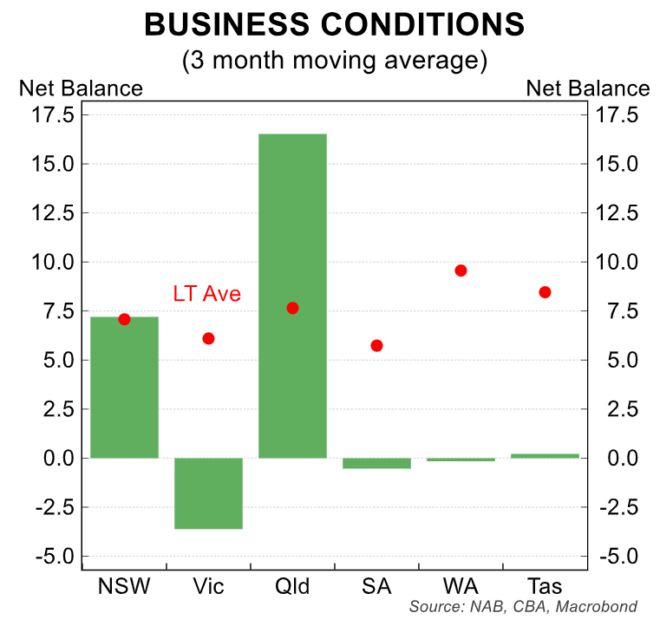
As a result, business investment in Victoria is weak.
Victoria is the second-largest state in the nation when measured by population and the size of the economy.
However, Victoria’s volume of business investment is well below NSW and Western Australia and is only marginally below Queensland (which has a far smaller economy and population).
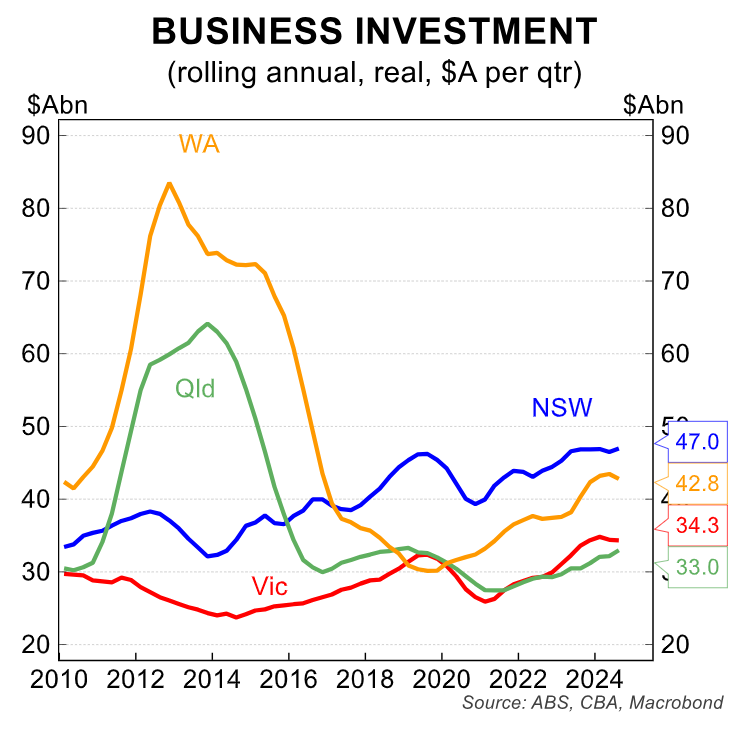
Victoria’s economic growth model is based on importing large numbers of people to build housing, infrastructure, and provide services.
The state’s population has increased by an astonishing 2.5 million people this century and is officially forecast to grow by another 4.2 million people during the following 31 years:
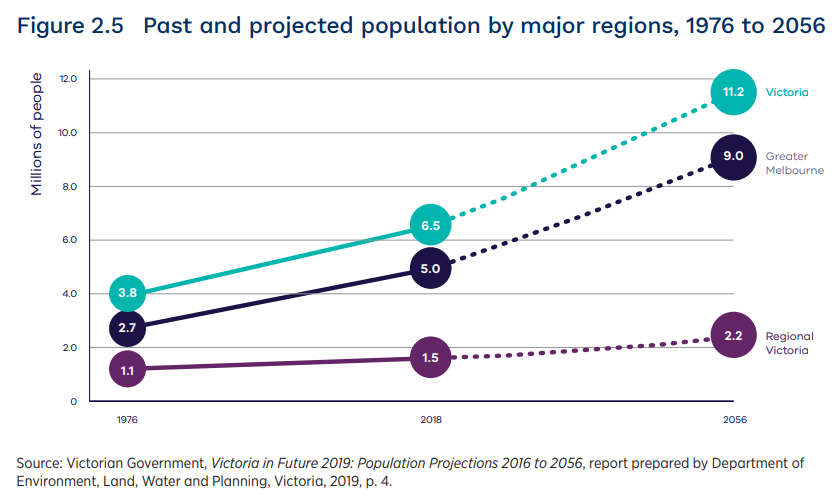
Victoria’s trading performance provides evidence of this ‘Ponzi’ economy.
Exports have grown slowly over the last 20 years, while imports have doubled.
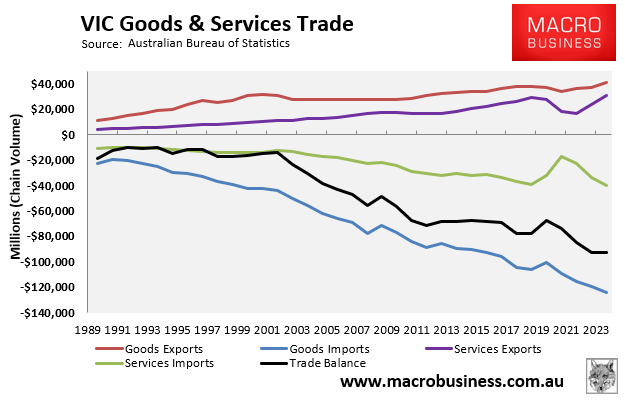
As a result, the state’s trade deficit has skyrocketed to $92.9 billion in the year ended Q2 2024:
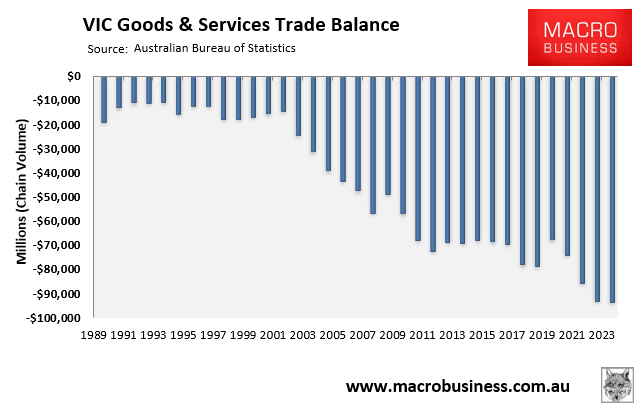
Victoria (via Melbourne) is essentially draining financial resources from mining states to fund its population ‘Ponzi’ plan, growing for the sake of growth via mass immigration and debt accumulation.
This ‘Ponzi’ growth model has resulted in perpetual infrastructure bottlenecks and lower living standards for incumbent residents due to rising congestion, reduced amenity, and deteriorating housing affordability.
It has also pushed the state deep into debt as it struggles to build its way out of the never-ending population crisis.
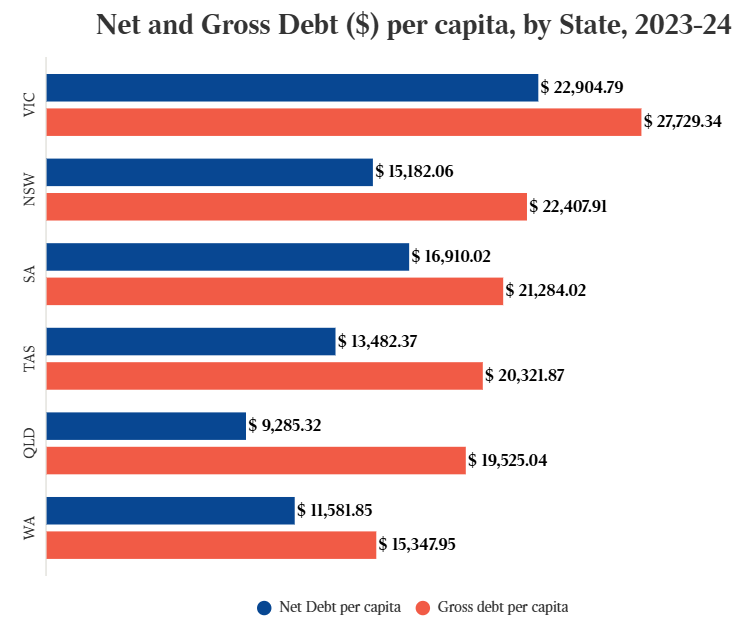
The challenge for the Victorian government is to build an economy based on real and sustainable growth that improves the living standards of the existing population.
The first step is to lobby the federal government to slash immigration to a sensible and sustainable level.
Endless mass immigration will literally send the state broke and destroy living standards.

